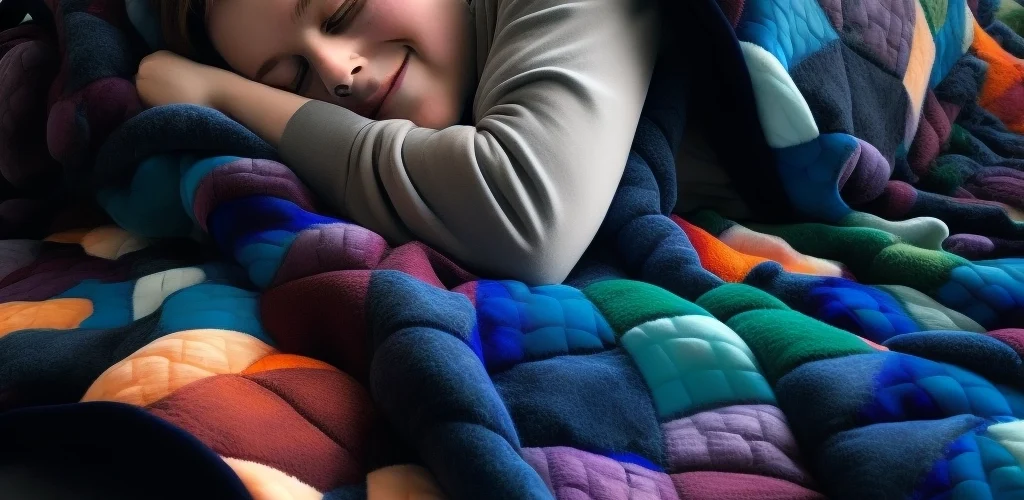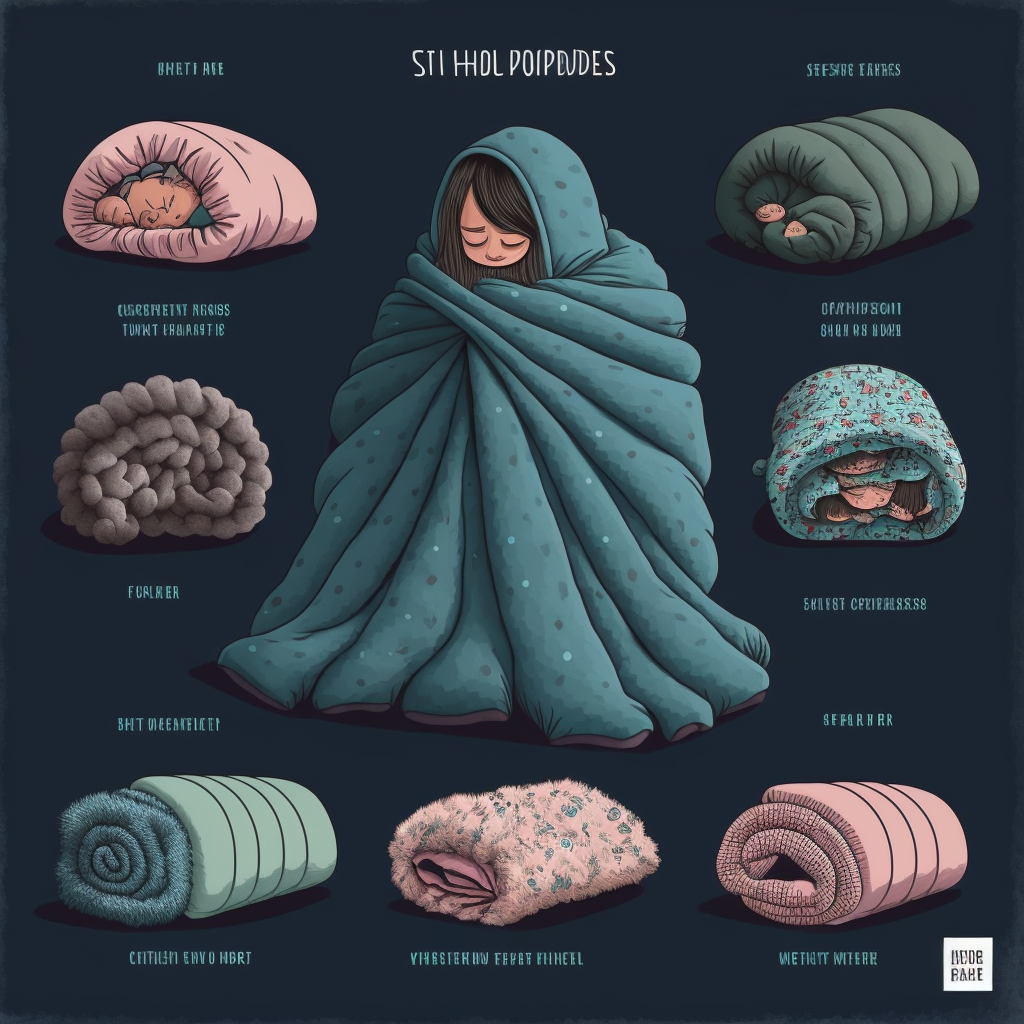The Benefits of Weighted Blankets for Autistic PeopleWeighted Blankets for Autism: How They Help with Sleep, Anxiety, and FocuThe Benefits of Weighted Blankets for Autistic People

Last updated: May 2025
- What Are Weighted Blankets?
- Benefits of Weighted Blankets for Autism
- How to Choose the Right Weighted Blanket for Autism
- Safety Guidelines and Best Practices
- Maintenance and Care
- Weighted Blanket Alternatives for Autism
- Research and Evidence
- Cost Considerations and Recommendations
- Frequently Asked Questions
- Conclusion
Weighted blankets are becoming increasingly popular sensory tools for people with autism spectrum disorder (ASD). Research shows these specially designed blankets can significantly improve sleep quality, reduce anxiety, and enhance focus for autistic individuals. This comprehensive guide covers everything you need to know about using weighted blankets for autism.
What Are Weighted Blankets?
Weighted blankets are therapeutic blankets filled with materials like glass beads, plastic pellets, or steel shot balls. These fillers distribute evenly throughout the blanket to create gentle pressure across the body. This deep pressure touch stimulation mimics the feeling of being hugged. It can be especially beneficial for people with sensory processing differences common in autism.
Benefits of Weighted Blankets for Autism
1. Improved Sleep Quality
Sleep problems affect up to 80% of autistic children and adults. Research published in the journal Sleep found that autistic children who used weighted blankets for 12 weeks experienced:
- Significantly better sleep quality
- Reduced nightmares
- Increased sleep duration
- Improved daytime functioning
The deep pressure stimulation from weighted blankets increases serotonin and melatonin production while decreasing cortisol levels, naturally promoting better sleep.
2. Reduced Anxiety and Stress
Anxiety disorders are common among autistic individuals, affecting up to 40% of the autism community. A study in Research in Autism Spectrum Disorders found that autistic adults experienced a significant reduction in anxiety levels. This occurred when they used weighted blankets for just 30 minutes daily. The participants in the study reported feeling much less anxious.
The calming, grounding effect of weighted blankets helps:
- Lower heart rate
- Decrease blood pressure
- Reduce stress hormones
- Promote feelings of safety and security
3. Enhanced Focus and Attention
Many autistic individuals struggle with attention and focus, especially in educational or work settings. Research published in Occupational Therapy in Mental Health found that autistic children who used weighted blankets during school activities demonstrated:
- Better concentration
- Improved task completion
- Reduced fidgeting
- Enhanced classroom engagement
4. Reduced Self-Stimulatory Behaviors
Self-stimulatory behaviors (stimming) like rocking, fidgeting, or hand-flapping are common in autism. A study in the journal Autism found that autistic children showed a significant reduction in self-stimulatory behaviors. This occurred when using weighted blankets for 30 minutes daily.
The deep pressure input from weighted blankets provides sensory feedback. This can satisfy the need for proprioceptive input. It reduces the need for other stimming behaviors.
How to Choose the Right Weighted Blanket for Autism
Weight Selection
The most important factor is choosing the correct weight. The general rule is:
10% of body weight + 1-2 pounds = ideal blanket weight
For example:
- 50-pound child: 5-7 pound blanket
- 100-pound teen: 10-12 pound blanket
- 150-pound adult: 15-17 pound blanket
Fabric Options
Consider sensory sensitivities when selecting fabric:
- Cotton: Breathable, hypoallergenic, machine washable
- Bamboo: Naturally antibacterial, moisture-wicking, soft
- Minky: Ultra-soft, warm, good for sensory seekers
- Cooling fabrics: Ideal for those sensitive to temperature
Size Considerations
Choose a blanket that:
- Covers the torso and legs
- Doesn’t hang over the bed edges (safety concern)
- Allows easy removal if needed
Safety Guidelines and Best Practices
Age Restrictions
Weighted blankets are generally safe for:
- Children over 3 years old
- Adults of all ages
Never use with:
- Infants or toddlers under 3
- Individuals who cannot remove the blanket independently
Medical Considerations
Consult a healthcare provider before using weighted blankets if you have:
- Respiratory conditions (asthma, sleep apnea)
- Heart conditions
- Circulation problems
- Claustrophobia
- Certain sensory processing disorders
Usage Tips
- Start gradually: Begin with 15-30 minute sessions
- Monitor comfort: Check for overheating or discomfort
- Proper placement: Place over torso and legs, never over the head
- Easy removal: Ensure the user can remove the blanket independently
- Temperature control: Use lighter clothing underneath if needed
Maintenance and Care
Proper care extends your weighted blanket’s lifespan:
- Check weight limits: Most washers handle up to 15-20 pounds
- Use gentle cycles: Cold or warm water, mild detergent
- Air dry when possible: High heat can damage filling materials
- Spot clean regularly: Address spills immediately
- Use a removable cover: Protects the blanket and makes washing easier
Weighted Blanket Alternatives for Autism
If a weighted blanket isn’t suitable, consider these alternatives:
- Weighted lap pads: Smaller, portable option for school or work
- Weighted stuffed animals: Comfort objects with gentle pressure
- Compression clothing: Wearable sensory input
- Body socks: Full-body compression for proprioceptive input
Research and Evidence
Multiple studies support the benefits of weighted blankets for autism:
- 2018 Sleep Journal Study: 12-week trial showed improved sleep quality in autistic children
- 2020 Research in ASD Study: 30-day trial demonstrated reduced anxiety in autistic adults
- 2019 Occupational Therapy Study: Improved focus and attention in classroom settings
Cost Considerations and Recommendations
Weighted blankets typically cost $50-$300, depending on:
- Size and weight
- Material quality
- Brand reputation
- Special features (cooling technology, removable covers)
Budget-friendly options: Start with a smaller size or lighter weight to test effectiveness
Premium features to consider:
- Cooling fabrics for temperature regulation
- Removable, washable covers
- Organic or hypoallergenic materials
Frequently Asked Questions
Can weighted blankets be used every night?
Yes, most autistic individuals can safely use weighted blankets nightly. However, start gradually and monitor for any discomfort.
How long do weighted blankets last?
With proper care, quality weighted blankets typically last 5-10 years.
Does insurance cover weighted blankets?
Some insurance plans may cover weighted blankets when prescribed by a healthcare provider as a medical device. Check with your provider.
Can weighted blankets help with meltdowns?
Many autistic individuals report that weighted blankets can help prevent meltdowns. They can also reduce the intensity of meltdowns. This is achieved by providing calming sensory input.
Conclusion
Weighted blankets offer evidence-based benefits for many autistic individuals, particularly for sleep improvement, anxiety reduction, and enhanced focus. While not a cure-all solution, they can be a valuable addition to a comprehensive sensory support toolkit.
Remember to:
- Consult healthcare providers before starting
- Choose the appropriate weight and materials
- Start with short sessions and gradually increase use
- Monitor for any negative reactions
- Combine with other autism-friendly strategies for best results
Many autistic individuals can experience an improved quality of life by selecting the right weighted blanket and using it properly. This improvement comes through better sleep, reduced anxiety, and enhanced daily functioning.
References:
- Barton, M., et al. (2018). The effects of weighted blankets on sleep quality in children with autism spectrum disorder. Sleep, 41(11), 1869-1878.
- Bogdashina, O. (2018). The Out-of-Sync Child Has Fun: Activities for Sensory Integration and Motor Planning. London: Jessica Kingsley Publishers.
- National Autism Association. (2021). Weighted Blankets for Autism.
- Psych Central. (2022). Weighted Blanket and Autism: Benefits, Effects, and Research.



2 Responses
[…] Blankets: Consider weighted blankets for a sense of security. Explore our guide on weighted […]
[…] Weighted Blanket Safety Tips […]